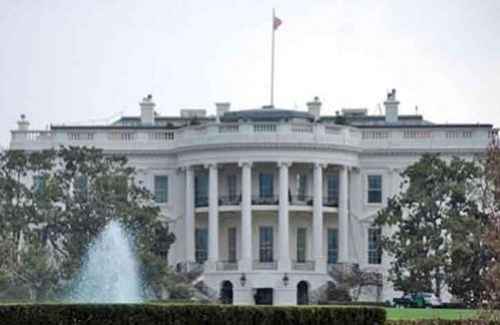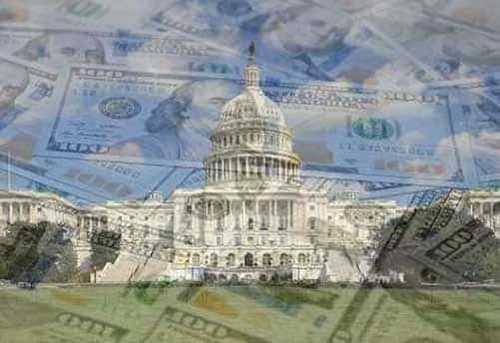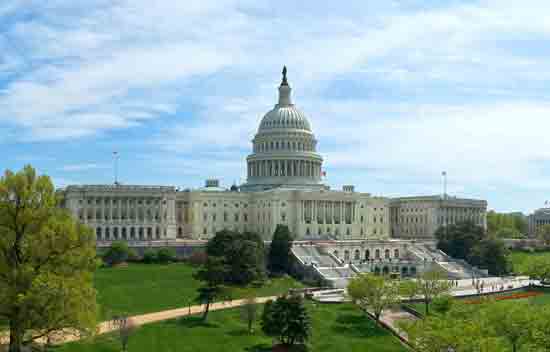Congress has until a week from today to raise the debt ceiling, the cap on the amount of money the Treasury can borrow to pay the government's bills. As the clock keeps ticking, you may still have unanswered questions. How dire could the consequences of not raising the debt ceiling be? What are the possible solutions? Here's a reading list to help you keep up.
The Debate Tuesday (Tuesday, July 26)
After President Obama and Republican House Leader John Boehner addressed the nation last night, there’s still no sign of a deal on the horizon. Politico has a good recap of the speeches with discussion of strategy. Some Republicans have denounced Boehner’s plan; CBS news sums up their concerns.
One of the biggest points of contention today is by how much should we raise the debt ceiling. Boehner proposes raising it by $1 trillion (enough to last the next six months), Reid by $2.5 trillion (enough to last until the 2012 election). USA Today has a basic summary of the two plans.
Following the debt ceiling debate in real time:
Slate has an updating infographic that lets you see how much money the Treasury has in its bank account right now. For the latest news and analysis, the Wall Street Journal has a frequently updated live blog. The Economist is also doing daily debt ceiling updates. Some good people to follow for updates on Twitter include CNBC’s@JimPethokoukis, TIME Magazine’s @MarkHalperin, CBS’s @NorahODonnell, NBC’s @LukeRussert and@KellyO, Slate’s @daveweigel, Talking Points Memo’s @brianbeutler and the Bipartisan Policy Center (@BPC_Bipartisan). Today we’re curating tweets with debt ceiling news and analysis on our homepage—check out the module in the top right. For breaking updates, Topsy can be a useful tool for finding the latest articles and tweets on the debt ceiling.
The basics on the debt ceiling (including where it comes from):
An earlier guide of ours answers basic questions about the debt ceiling, like “What is the debt ceiling, really?” and “Is the debt ceiling necessary?” Poynter has a guide to common misconceptions about the debt ceiling that can help you cut through misleading coverage. It’s important to note, as Poynter does, that raising the debt ceiling doesn’t mean that we’re increasing spending, but that we’re letting the Treasury borrow money to pay for things we’ve already agreed to spend on. Here’s how NPR Correspondent Robert Smith explained the situation to Poynter:
“The way I put it is that Congress has already ordered the pizza. They approved the pepperoni. They called up and had someone deliver it,” Smith said via email. “Now the pizza guy is knocking at the door, and asking to get paid. If you don’t raise the debt ceiling, it’s like saying we didn’t want that pizza in the first place. Maybe he’ll go away if we don’t answer.”
The New York Times has a helpful chart that breaks down which policies have contributed to the national debt over the Bush and Obama administrations. This chart, tweeted James Fallows at the Atlantic, “should accompany every story about the debt ceiling debate.” Talking Points Memo explains that most of the U.S. national debt is actually owed to the United States—it’s money that some government agencies have borrowed from each other. The Guardian’s data blog has a rundown of which foreign countries the United States owes, and how much we owe them. *If you want to go in-depth into the topic, there’s a compilation of academic research on the debt ceiling up at Ezra Klein’s Washington Post blog.
What might happen if the debt limit isn’t raised:
Basically, anyone and anything that relies on federal government funds may not get paid, including members of the U.S. military and military contractors and people receiving Social Security checks. The New York Times has a story detailing what may happen to state governments if the debt ceiling doesn’t get extended. Bloomberg has an interactive that lets you take on the role of the Treasury trying to decide which of its bills to pay.
The U.S. credit rating might get downgraded, which could raise the cost of borrowing and cause panic in financial markets and dumping of U.S. bonds. The IMF said today that a downgrade could be “extremely damaging” to the world economy. Forbes has a piece weighing the potential consequences of a credit rating downgrade and whether or not it’s inevitable.
*Fears that the U.S. could lose its top credit rating deepened Monday evening after Republicans and Democrats failed to strike a deal. According to The Wall Street Journal, Moody’s, S&P and Fitch have all said they may downgrade the U.S. rating, though they all cite different criteria for the kind of deal that could avoid a downgrade. There is some debate about whether the ratings agencies would really do this, and how much it would matter if they did. Yahoo News’s Daniel Gross and RealClearMarkets.com’s John Tammy argue that a downgrade is far less likely than politicians and the media are making it out to be. USA Today reports that, while Wall Street money managers are preparing contingency plans, many don’t see a downgrade as the end of the world because “the rating agencies lost a lot of credibility during the financial crisis when they failed to alert investors of the coming mortgage crisis.”
WNYC’s Brian Lehrer show brought on finance journalist Beth Kobliner to discuss the effects a default might have on the average person. Meanwhile, CNN reports that veterans were called to the White House to discuss how they might be affected if the debt limit isn’t raised.
What, and who, is holding up the deal:
Much of the debate has centered on other things that should go along with raising the debt ceiling, like repeal of health care law (here’s an earlier post we did on that). This New York Times chart lays out the major obstacles to working out a debt ceiling deal. At the New York Review of Books, Elizabeth Drew has an insightful summary ofthe failures of the negotiations so far.
Possible solutions:
As of last week, there were eight possible deals on the table, all of which the New York Times’ Caucus blog detailed in a cheat sheet. After debt ceiling negotiations temporarily broke off [36] on Friday, congressional party leaders began drafting two new plans. Bloomberg has the details of those plans here. Bill Clinton also raised the possibility that Obama could raise the debt ceiling without congressional approval, using a provision in the 14th Amendment. The New York Times explains how Clinton’s recommendation would work. In the event that a deal isn’t reached, CNBC’s John Carney suggests that the Federal Reserve might be able to keep the Treasury afloat by selling its Treasury securities. CNN Money reports that the Fed probably can’t help us out if the debt ceiling doesn’t get extended. At The New Yorker, James Surowiecki argues that it would be best to just get rid of the debt ceiling altogether.






